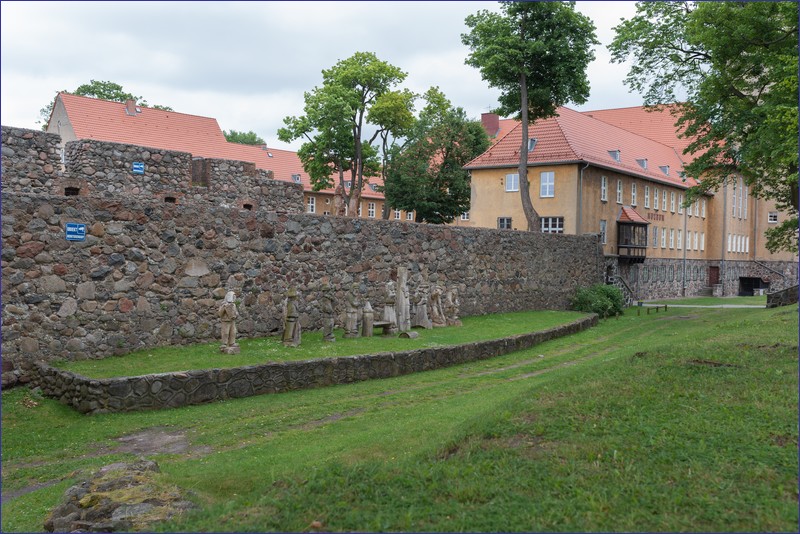Olsztyn is the capital of the Warmian-Masurian Voivodeship and an important railway junction. The medium-sized city is surrounded by picturesque lakes and beautiful forests. Olsztyn is a good starting point for train trips to some interesting towns and cities but generally in the Warmian-Masurian Voivodeship regional trains run rarely and many railway lines were closed and dismantled, so if you plan day trips from Olsztyn by train, sometimes is difficult to organize a day trip without travelling by bus in one direction or on the part of the journey between two interesting towns.
In this article, I’ve included the most important ones that can be reached by regional trains within two hours, counting from the first to the last station within the borders of Gdansk and the destination.
Day trips from Olsztyn by train – direction Toruń
Toruń is a beautiful city and in my opinion most important destination if you stay in Olsztyn and plan day trips from Olsztyn by train. I recommend to take a fast train operated by PKP Intercity.
Ostróda – a picturesque town on a lake, surrounded by pedestrian and bike paths as well as a range of seasonal attractions. Ostróda is the starting or ending point of the famous canal connecting it to Elbląg. A small historical museum operates in the former Teutonic castle. Near the train station is the Church of the Immaculate Conception, and the complex of former military barracks is also worth seeing.
Iława (optional) – a beautiful railway station and popular lake. The town lies on the shores of Lake Jeziorak, the longest lake in Poland, which makes it a popular destination for sailing, water sports, and summer relaxation. Most important landmarks are the Neo-Gothic Town Hall and the historic Church of the Transfiguration. Iława is also known for the nearby Iława Lake District Landscape Park, offering beautiful natural scenery and hiking opportunities.
Brodnica (optional) – formerly an important railway junction. When traveling from Olsztyn, a transfer at Jabłonowo Pomorskie station is required. The town’s landmark is a tower remaining from the former Teutonic castle, now home to the Brodnica Museum. From the top of the 54-meter tower, you can enjoy a panoramic view of the town. Another museum branch is located in the Chełmińska Gate and its adjacent townhouse. The Environmental Education Center, housed in a historic granary, showcases the flora and fauna of the Brodnica Lake District and includes a reconstructed Mesolithic hunter settlement discovered in Mszano. Entrance tickets to all museum branches are very affordable.
Wąbrzeźno (optional) – a town you can visit, but you can also skip. The town center is about 3 kilometers from the train station. It’s of particular interest to railway enthusiasts, as it used to be possible to travel from the station to the center on what was probably the shortest scheduled passenger railway line in Poland. In memory of that, the old town station was reconstructed and a short stretch of track preserved. Other attractions include sacred monuments: the Church of Saints Simon and Jude Thaddeus (mid-14th century) and a former Evangelical church from the 1830s. A positive highlight is the revitalized and nicely developed area around Castle Lake.
Toruń – one of the most beautiful cities in Poland. A must-visit place due to its very well-preserved Old Town. From the main railway station, it’s a bit of a walk, but the Toruń Miasto station is closer. Beautiful buildings, picturesque alleys, interesting spots – in short, you can spend hours strolling through Toruń’s city center. The heart of the city is the Old Town Market Square with its impressive Town Hall (which has an accessible viewing tower). The most important landmarks include the Church of St. John the Baptist and St. John the Evangelist, the Gothic parish church of St. James, the former Franciscan monastery, and the Leaning Tower – a medieval defensive tower tilted 1.4 meters from vertical; one of nine surviving towers. As for museums, notable ones include the Nicolaus Copernicus House, the Tony Halik Travelers’ Museum, the Toruń Gingerbread Museum, and the Living Gingerbread Museum. The Museum of the Toruń Fortress is housed in the former Chełmno Gate Barracks building, near the bus station. In the summer season, you can also take boat trips on the Vistula River.
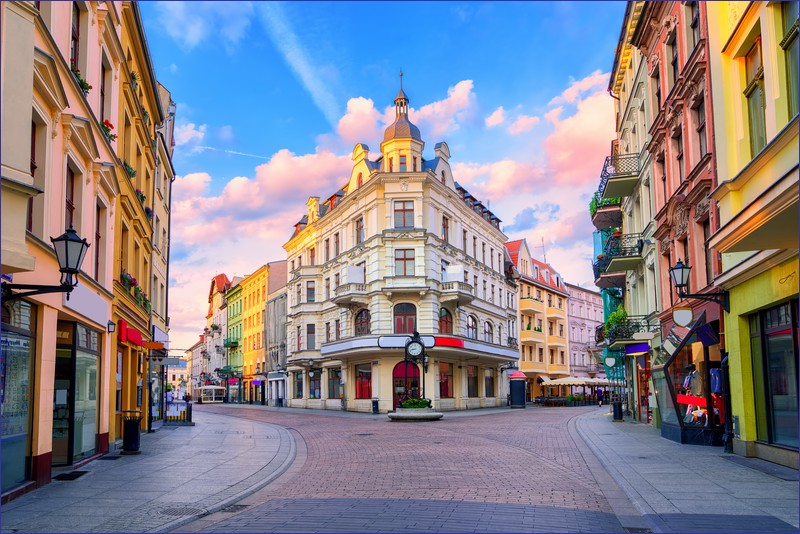
Direction Malbork
Pasłęk – a small town with a population of around 12,000. Within its compact center, several interesting historical monuments have been preserved. The most important of these is the Teutonic castle, which now houses administrative and cultural institutions. In Pasłęk, you can see very well-preserved city fortifications and two of the three former city gates – the Town Gate and the Mill Gate. Also noteworthy is the Gothic Church of St. Bartholomew from the 14th century, featuring Hildebrandt organs, as well as the Church of the Visitation of the Blessed Virgin Mary from 1885.
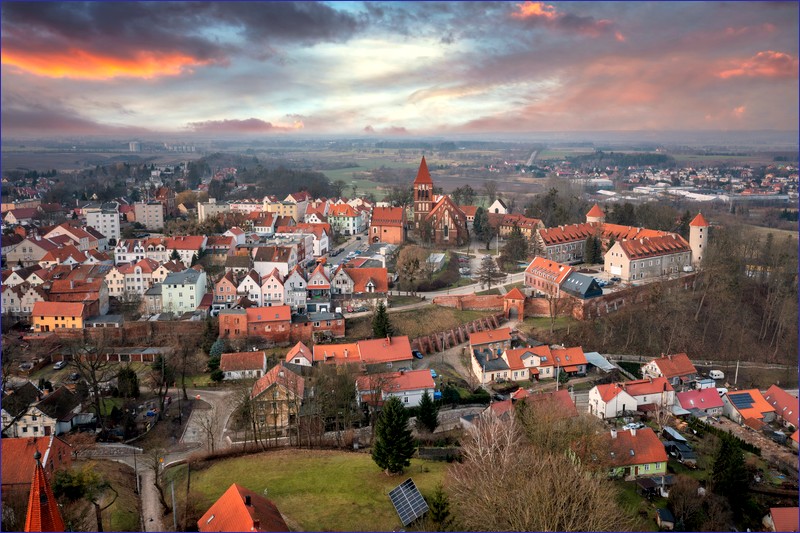
Elbląg (optional) – another city you can visit, although it’s not essential. The city center was largely rebuilt after the destruction of 1945, but it’s still not quite the same. The main landmarks are St. Nicholas Cathedral and the Market Gate (Brama Targowa), and it’s definitely worth visiting the Archaeological and Historical Museum. It’s unfortunate that trains no longer run on the scenic Elbląg – Braniewo railway line via Frombork along Vistula River Lagoon — the line had great tourist potential, currently there are draisines in Frombork during summer season.
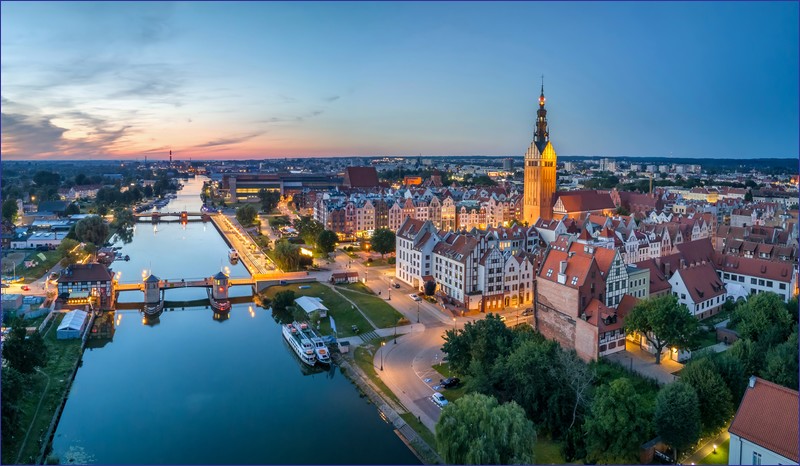
Malbork – a city world-famous for the Teutonic Castle. Almost all the historic buildings were destroyed during World War II. Besides the rebuilt castle, attention should also be paid to one of the most beautiful railway stations in Poland. A few historic churches have survived, and among the surrounding architecture, the Polish Post Office building and former barracks stand out. Those interested in the city’s history should visit the Malbork City Museum.
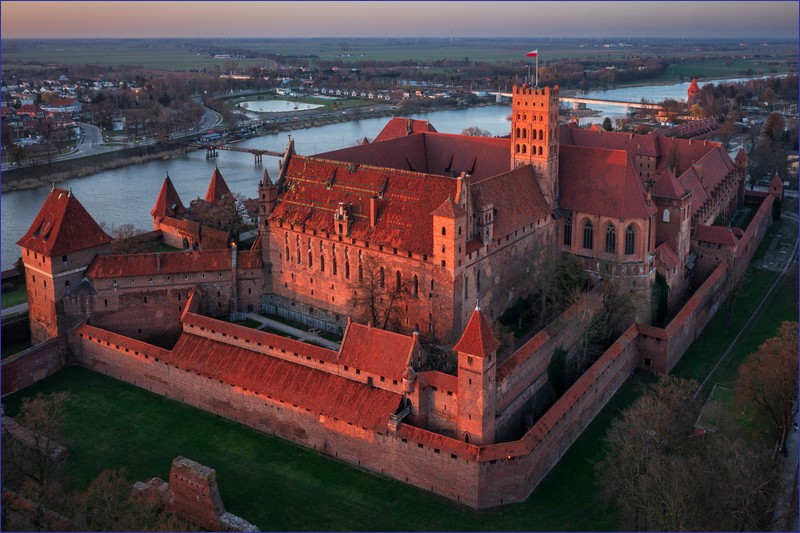
Direction Giżycko
While this article was being prepared, the railway line was undergoing electrification and trains were not operating. The planned completion of the work is in 2026.
Kętrzyn (optional) – an interesting town for a day trip and a good base for cycling or bus excursions around the area. In Kętrzyn, it’s worth visiting the Regional Museum located in the Teutonic castle and the Basilica of St. George. Remnants of the defensive walls with towers have been preserved, along with townhouses from the turn of the 19th and 20th centuries and the town hall from 1886.
From Kętrzyn, it’s worth taking a bus to Święta Lipka, known for its Marian sanctuary, or to Gierłoż, where you can visit the Wolf’s Lair, as well as to Mamerki, which features a complex of bunkers. Not far from the Wolf’s Lair lies the Masurian Attraction Park Mazurolandia, whose main feature is miniature models of historic monuments from the Warmia and Masuria region. Local railway line Kętrzyn – Węgorzewo is currently abandoned.
Giżycko – a popular holiday destination offering a wide range of outdoor activities and water sports. Preserved in the town are 19th-century townhouses and a former Evangelical church. The city’s main attraction is the extensive Boyen Fortress, hidden in a dense forest. Also recommended is the Water Tower from 1900, now converted into a café, museum, and observation point. In the summer season, ships depart from the marina on Lake Niegocin to Mikołajki, Węgorzewo, and Ruciane-Nida, operated by Żegluga Mazurska.
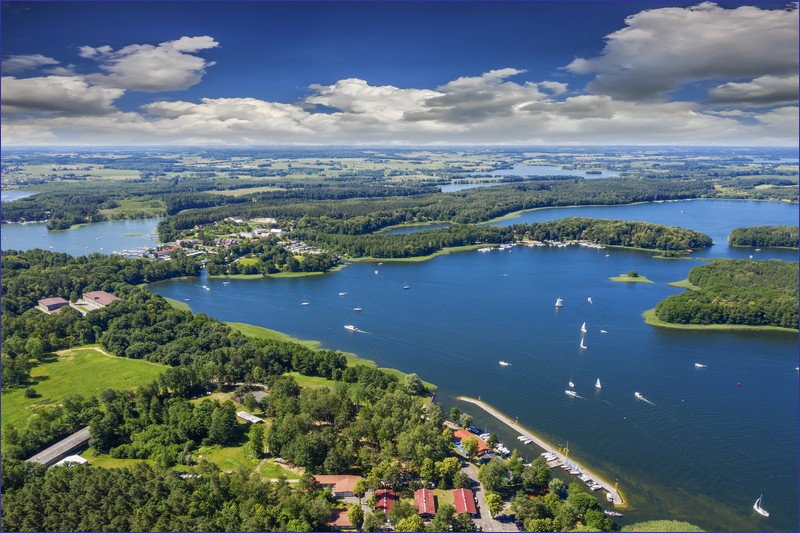
Direction Braniewo
The railway line has been recently renovated, but only a few trains run daily between Olsztyn and Braniewo.
Dobre Miasto (optional) – like many other towns in the Warmian-Masurian Voivodeship, it is dominated by modern buildings, but a short visit is worthwhile to the Urban Open-Air Museum on Sowińskiego Street, where a 19th-century town street has been carefully reconstructed, complete with period artisan workshops. Nearby stands the Stork Tower, a remnant of the old city fortifications. Also worth seeing is the majestic collegiate church, built between 1357 and 1389 in the brick Gothic style.
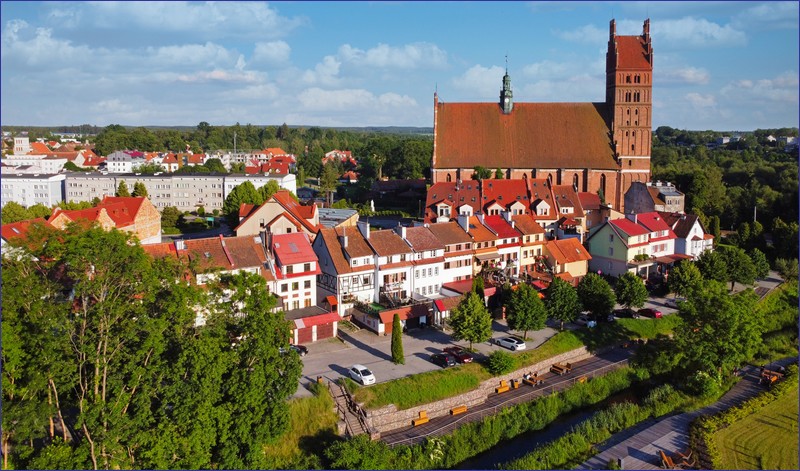
If you’re staying in Dobre Miasto, it’s worth taking a minibus to Lidzbark Warmiński, or possibly to Bartoszyce (optional). The Olsztyn–Bartoszyce route by minibus takes about 20 minutes from Dobre Miasto to Lidzbark Warmiński, with another short ride from there to Bartoszyce. Amidst the communist-era apartment blocks in Lidzbark Warmiński, a historic part of the town has been preserved, including one of Poland’s most beautiful castles – the Castle of the Warmian Chapter, picturesquely located in a bend of the Łyna River. The castle interiors are open to visitors. Notable landmarks include the High Gate (Wysoka Brama) and the restored library building with an adjoining park.
Bartoszyce is far less appealing. The town square is paved over in concrete, and the only noteworthy sights are a city gate, the municipal park, and the Church of St. John the Apostle and Evangelist. Both Bartoszyce and Lidzbark Warmiński once had regular railway connections. Occasionally, special trains operated by the company Turkol arrive in Bartoszyce.
Pieniężno (optional) – a heavily run-down town, almost entirely destroyed during World War II. Its main attraction is the Wałsza River Valley and one of the most beautiful railway bridges in Poland spanning the river. Otherwise, a visit involves a bleak walk through the ruined town center – a town hall in ruins, remnants of an Evangelical church, and castle ruins. The only monument truly worth recommending is the Church of St. Peter and Paul.
Orneta – another Warmian town whose best days are behind it. It suffered significant war damage, but part of the market square with arcaded townhouses and the Gothic town hall has survived. It’s a good place for a walk through a small historic urban area. You can also visit the Church of St. John the Baptist. The town center is about 2 kilometers from the train station. A similar distance must be covered to reach the Sanctuary of the Visitation of the Blessed Virgin Mary in Krosno, near Orneta, which somewhat resembles the famous sanctuary in Święta Lipka.
Braniewo – a town on the border with the Kaliningrad Oblast, once an important railway hub. The brick railway station still stands. Though dominated by post-war communist architecture, there are a few places worth visiting. These include the 14th-century Church of St. Catherine, now a minor basilica. The Church of St. Anthony from 1837 awaits reconstruction after part of it was destroyed by fire in 2016. North of the city, pilgrims visit the Sanctuary of the Holy Cross with its revered image. Some city wall fragments remain, and among the buildings the Jesuit Collegium Hosianum, a semi-oval tower, and a former moat turned park stand out. The Regional Museum, run by local enthusiasts, receives positive reviews.
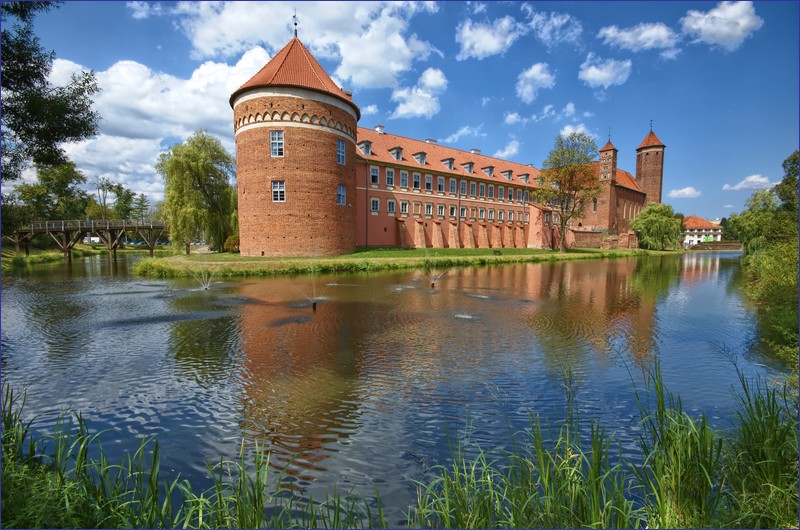
Direction Nidzica
The railway line has been renovated. Regional trains to Działdowo and long-distance trains to Warsaw run along this route.
Olsztynek – a small town famous for the Museum of Folk Architecture, an open-air museum located on its outskirts, where visitors can see traditional houses and farm buildings from the Warmia and Masuria regions. Despite destruction, massacres, and devastation during World War II, some landmarks have survived, including the railway and water towers, parts of the old city fortifications, a few 19th-century houses, the Church of the Sacred Heart of Jesus, and the former Teutonic castle, which has lost its original architectural style due to numerous renovations. On the ground floor of the town hall, there is a small museum dedicated to the local Stalag (POW camp) and the history of the town.
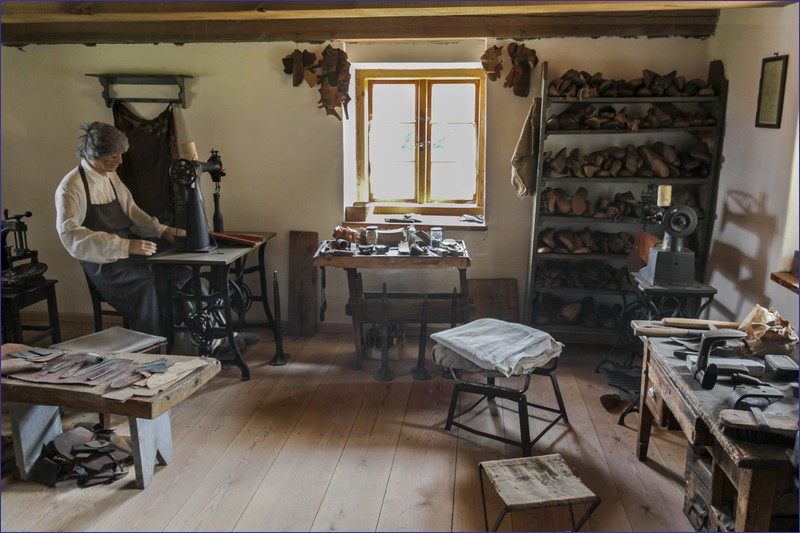
Nidzica (optional) – a town almost completely destroyed during World War II. Its main landmark is the castle, which was rebuilt after wartime damage. It’s worth entering the courtyard and strolling through the park surrounding the castle, although there’s little to see inside as the building has been converted into a hotel and restaurant. Notable structures include the town hall building and the remains of a former brewery. It’s also worth visiting the richly decorated interior of the otherwise modest-looking Church of St. Adalbert, and elsewhere in town, the neo-Gothic Evangelical Church of the Holy Cross has been preserved.
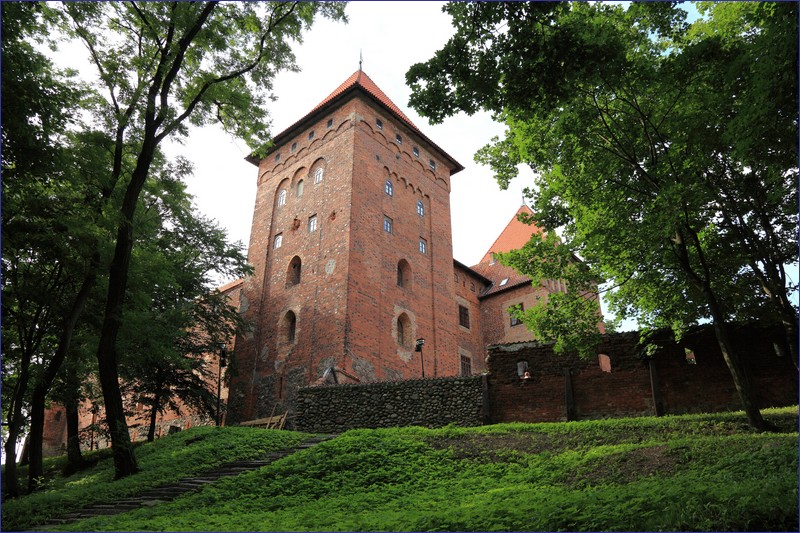
Direction Szczytno
There are trains from Olsztyn to Ostrołęka and Ełk which stop at Szczytno railway station and Olsztyn – Szczytno trains.
Szczytno – a town located between two lakes, one of which serves as a swimming area and recreational zone during the summer season. The town’s main historical site and attraction is the ruins of the Teutonic castle, built in 1370. Despite numerous plans, the castle has not been rebuilt; only the walls and two rooms are open to visitors. Inside the town hall building, the Masurian Museum is worth a visit, featuring exhibitions on the history of Szczytno and the surrounding region, as well as the folk culture of the Masurians. During the summer season, the Masurian Cottage on Maria Konopnicka Street is open to visitors twice a week.
Related articles:
Train travel in Poland – a comprehensive guide
Scenic railways in Poland
Narrow-gauge railways in Poland
